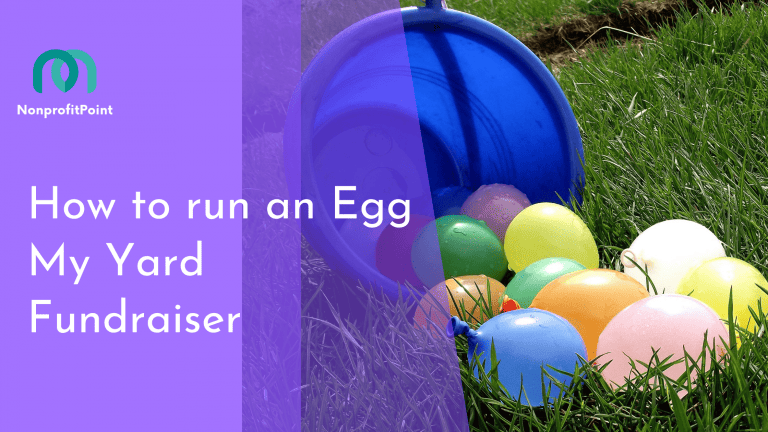10 Farmers Market Fundraising Ideas to Empower Your Local Community
In a world where local communities are increasingly seeking ways to support one another, farmers markets stand as a vibrant oasis of fresh produce, homemade goods, and a shared sense of community spirit. But beyond offering a delightful array of fruits and vegetables, these markets can also serve as powerful fundraising platforms for various causes. From supporting small-scale farmers to contributing to local charities, fundraising at farmers markets taps into the collective goodwill and sustainability mindset that defines these spaces. Imagine the potential when your Saturday morning stroll through the stalls becomes an opportunity to make a real impact while indulging in the freshest tomatoes or that jar of artisanal honey.

If you’ve ever wondered how to harness the energy and engagement of your local farmers market for a greater good, you’re not alone. This blog post is your guide to creative and effective fundraising ideas that not only raise money but also foster a greater sense of community. Whether you’re a market manager, a local nonprofit, or even a passionate customer, you’ll discover innovative ways to blend philanthropy with the earthy charm of your local market. Keep reading to unlock the full potential of your farmers market and transform it into a hub of both nourishment and generosity.
Here are 10 Farmers Market Fundraising Ideas:
- 1. Sponsored “Harvest Basket” Raffle
- 2. Market Cooking Challenge
- 3. “Taste of the Market” Tasting Tour
- 4. Artisan Market Craft Fair
- 5. Grow & Give Plant Sale
- 6. “Pay it Forward” Produce Stand
- 7. Market Open-Mic or “Buskers for Bucks”
- 8. Farm-to-Table Pop-Up Dinner
- 9. Collective Cookbook
- 10. “Green Thumb” Workshops
1. Sponsored “Harvest Basket” Raffle
Imagine walking into a farmers market and seeing a vibrantly colored basket overflowing with crisp vegetables, juicy fruits, homemade jams, fresh-baked goods, and maybe even a bottle of local wine. This is not just any basket—it’s a work of art and a tangible representation of the community’s agricultural abundance. By creating a “Harvest Basket” raffle, you are offering shoppers a chance to win this beautifully curated collection while also raising funds for a good cause.
In this approach, securing community buy-in is paramount. Start by seeking sponsorship from local businesses, community groups, or even enthusiastic individuals who recognize the value of supporting local food systems. Sponsors can cover the cost of the basket’s contents or donate premium items directly. Not only does this allow for 100% of the raffle proceeds to go to the cause, but it also gives sponsors visibility in the community. Display their logos on the basket or raffle ticket booth, or mention them in promotional materials.
As for the raffle itself, consider selling tickets both at the market and online in the days leading up to the event. This widens your pool of participants and gives people who may not be able to attend the market an opportunity to support the cause. By the end of the event, you’ll have raised funds and possibly gained new market regulars who came for the raffle but fell in love with the market’s offerings.
2. Market Cooking Challenge
The “Market Cooking Challenge” is more than just an event—it’s a celebration of local flavors and culinary creativity. Picture this: Community chefs, whether professionals or hobbyists, are given a basket of ingredients sourced entirely from the market. They face the thrilling task of preparing a dish that not only tastes amazing but also highlights the best that local farmers have to offer.
This type of event adds a spectacle to your farmers market, captivating both regular shoppers and curious onlookers. To make it even more engaging, you can involve the public in the experience. Shoppers could vote for their favorite dish by making a donation, or a panel of local food critics could judge the dishes, with each vote or judgment contributing to the fundraising goal. The atmosphere during the challenge is bound to be electric—vendors may see a spike in sales as people rush to buy the specific ingredients featured in the dishes.
One of the keys to a successful cooking challenge is communication and collaboration with the vendors. By sourcing all ingredients from the market, you generate excitement and appreciation for local produce and increase vendor sales. This creates a win-win situation, where both the cause and the market community benefit. By the end of the day, you’ll have raised funds, highlighted local talent, and strengthened community ties in a uniquely delicious way.
3. “Taste of the Market” Tasting Tour
A standard trip to the farmers market is often a linear experience—shoppers come in, purchase their goods, and head out. The “Taste of the Market” Tasting Tour, however, transforms this routine into a multi-sensory adventure that invites participants to explore the market in a whole new way. The concept is simple but powerful: for a small donation, patrons can join a guided tour that leads them from stall to stall, where they sample specially curated bites from each participating vendor.
This event accomplishes several things at once. First, it creates a sense of novelty and excitement, making the market feel special and event-like, rather than just another stop on a weekly errand list. Second, it exposes customers to a broader range of products than they might normally purchase. A shopper who usually sticks to apples and greens might discover that they love goat cheese or cider, leading to future purchases and a deeper commitment to local shopping.
Additionally, the tasting tour provides vendors with a platform to showcase their best and most unique products. Imagine a honey seller who not only offers a sample of their wildflower honey but also explains the story behind the bees and the flowers they pollinate. This personal connection creates brand loyalty and educates shoppers on the importance of supporting local, sustainable practices.
To organize the event, consider creating tickets or a wristband system, giving participants access to the special tasting tour. You could offer several tour times throughout the market day to accommodate different schedules and crowd sizes. The funds raised from the ticket sales could go directly to your cause, while the market benefits from increased foot traffic and customer engagement.
4. Artisan Market Craft Fair
Farmers markets are known for their fresh, locally-grown produce, but they can be so much more. By expanding the market to include an Artisan Craft Fair, you can transform it into a haven for anyone who loves unique, handmade items, alongside fresh food. This event would involve welcoming local artisans, crafters, and makers to set up stalls alongside produce vendors, offering everything from hand-thrown pottery to knitted scarves, handcrafted jewelry, and beyond.
Imagine walking through a market where you can purchase a bouquet of home-grown flowers and then pick out a hand-painted vase for them just a few stalls away. This kind of offering not only attracts a wider audience but also creates a whole new shopping experience—one that’s rich in variety and creativity. For farmers markets that already have strong roots in the community, this can be an opportunity to draw in visitors who might not yet see the market as a regular stop.
The twist here is that many artisans would agree to donate a percentage of their sales from this event to your fundraising cause. By aligning the craft fair with a charitable mission, you enable shoppers to make purchases that feel purposeful and enriching. This sense of doing good while buying something beautiful has an added appeal for patrons who are increasingly conscious of where they spend their money.
Promote the event as an opportunity to support both local farmers and craftspeople, all while contributing to a meaningful cause. Collaborating with artisans could also lead to more creative partnerships in the future, such as workshops or seasonal craft markets, further embedding the farmers market as a pillar of community activity and engagement.
5. Grow & Give Plant Sale
There’s something profoundly satisfying about nurturing plants from seedling to maturity—an echo of the same care and patience that farmers put into growing the food at your local market. By organizing a “Grow & Give” Plant Sale, you can tap into this universal love for greenery while raising funds for your cause. The idea is simple: Partner with local nurseries, gardening clubs, or even green-thumbed community members to collect a variety of potted herbs, flowers, vegetable seedlings, and decorative plants to sell at the market.
What makes the “Grow & Give” Plant Sale unique is its educational potential. Each plant could come with a small card that includes easy-to-follow care instructions, a brief description of the plant’s origin, and a note on how a buyer’s contribution helps the cause. For instance, if you’re raising funds for a community garden or local shelter, list specific projects that sales will support. This personal touch not only makes the purchase special but also helps buyers feel deeply connected to the larger goal.
Furthermore, consider introducing a “Plant Adoption” program where customers can choose to “adopt” and care for a plant donated by someone else. The plant could even come with a note from the donor, creating a unique sense of connection between community members. This concept fosters a sense of continuity in giving—plants will continue to thrive long after the fundraiser ends, serving as a living reminder of the contribution made.
The plant sale doesn’t just have to be a one-time event either. Encourage repeat visits by offering seasonal plants or inviting buyers to return later for more gardening tips. Perhaps you could even hold “best-grown” contests where participants bring back photos or examples of how their plant has thrived under their care. This creates a long-term engagement loop that can drive interest in both the plant sale and the wider farmers market.
6. “Pay it Forward” Produce Stand
In times of need, human kindness and generosity often shine brightest. The “Pay it Forward” Produce Stand embodies this sentiment, turning a simple act of shopping into a powerful community-building experience. The idea is for market-goers to buy extra produce—whether it’s a few bunches of carrots, a basket of strawberries, or loaves of bread—and donate these items at a dedicated stand. From there, the collected goods can be distributed to local shelters, food banks, or families in need.
The beauty of this model lies in its simplicity and ripple effect. Shoppers who participate don’t need to go out of their way to make a significant impact. They’re already at the market, buying fresh and nutritious foods for themselves—why not pick up a little extra to share with someone less fortunate? And because the contributions go toward supporting those within the local community, participants feel an immediate, tangible connection to the impact they’re making.
To add a personal touch, you could allow donors to leave a handwritten note of encouragement alongside their contribution. A simple “Enjoy this healthy snack!” or “Wishing you a wonderful day!” can go a long way toward brightening someone’s day. These small acts of kindness can accumulate, creating a communal effort where everyone has the opportunity to give, even in small ways.
Marketing is key to making the “Pay it Forward” stand a success. Use signs, social media, and word of mouth to promote this ongoing, feel-good initiative, so both regular shoppers and new visitors are eager to participate. Think of it as not just a fundraising strategy, but a community outreach program that underscores the market’s role as a place for both physical sustenance and social good.
7. Market Open-Mic or “Buskers for Bucks”
Music has a unique way of bringing people together—creating an atmosphere that’s both lively and inviting. Introducing a “Market Open-Mic” session or a “Buskers for Bucks” corner at your farmers market can add an extra layer of charm while acting as a subtle way to raise funds. By opening up the stage to musicians, poets, and other performers from the local community, you are not only giving artists a unique platform but also offering market-goers a richer, more multifaceted experience.
Artists perform purely for the love of it, but with a twist: All tips and donations go towards your fundraising goal. Consider setting up a visible donation jar or using mobile payment methods for those who don’t carry cash. Mention the cause frequently so that market patrons understand where their contributions are going and feel motivated to give more freely. The fact that all the proceeds will support a local cause or community project can encourage more generous donations.
Moreover, an Open-Mic or Busking event gives lesser-known artists a chance to shine. You can even schedule specific slots for young, up-and-coming talent—think teenage musicians or fledgling stand-up comedians. This is a great way to make the market intergenerational, appealing to both older patrons who appreciate live music and younger crowds who are keen on seeing their peers perform.
Besides raising funds, these performances add a dynamic, ambient vibe to your market—shoppers may linger longer, exploring more stalls, spending more money, and deepening their connection to the market as a whole. Over time, the concept could evolve into a signature feature of your market, drawing in people who come not just for the shopping but for the whole experience.
8. Farm-to-Table Pop-Up Dinner
Imagine dining beneath a canopy of twinkling lights, the tables adorned with fresh flowers, and rustic farm crates repurposed as seating. A “Farm-to-Table Pop-Up Dinner” isn’t just a meal; it’s an experience that celebrates the very soul of a farmers market—farm-fresh food and community spirit. By hosting a one-night-only dinner featuring dishes made from ingredients sourced entirely from your market, you offer an exclusive, intimate experience that guests are unlikely to forget.
Planning such an event does require organization and collaboration but can result in an unforgettable night that raises significant funds. Start by partnering with local chefs who are passionate about using local, sustainable ingredients. Work closely with market vendors to pre-plan the menu, ensuring that the dinner highlights the very best of what’s in season. You could even involve a sommelier or a local brewer to pair the courses with artisanal wines or craft beers, heightening the dining experience.
This event can be highly attractive to foodies, locavores, and community-conscious diners alike. These are people who appreciate not just good food, but the story behind their meal—the farmers who grew the produce, the chefs who prepared it, and the cause their dinner supports. To enhance the experience, consider having vendors or chefs give brief talks or demonstrations between courses, sharing stories about the food’s journey from farm to table.
Sell tickets well in advance, and market the dinner as limited, exclusive seating to create urgency. Tickets can be priced to reflect both the quality of the meal and the donation to the cause, allowing you to raise a substantial amount from a single evening. Beyond just fundraising, a Farm-to-Table dinner positions your market as more than just a place to shop— it’s a hub for localized, community-driven experiences that stay with people long after the plates are cleared.
9. Collective Cookbook
Cookbooks hold a special place in the hearts of many—they are more than just a collection of recipes; they are a gateway to cherished memories, cultural traditions, and culinary adventures. By creating a “Collective Cookbook” centered around your farmers market, you can produce a tangible and lasting product that celebrates community, supports local vendors, and raises funds for a meaningful cause. This cookbook wouldn’t be just another recipe book, but a compilation of dishes that reflect the flavors, expertise, and stories of your local area.
Start by gathering recipes from a diverse pool of contributors—vendors, chefs, market loyalists, and even home cooks from the community. Encourage them to submit recipes that are both delicious and showcase the ingredients available at the market. For example, your local farmer who grows heirloom tomatoes might include a family recipe for a rustic tomato tart, or a beekeeper might share a honey-glazed vegetable dish. By focusing on recipes that incorporate produce from the market, the cookbook serves dual purposes—it promotes the market while also educating readers on how to use fresh, local ingredients in their daily lives.
But don’t just stop at recipes—add a dash of storytelling. Include short write-ups about the people who contributed, the history of the market, and maybe even some food photography from local artists. These elements make the cookbook more than just a kitchen tool; they turn it into a keepsake that readers will return to again and again. This personal touch fosters a deeper connection between the readers, the market, and the cause you’re supporting.
Once compiled, the cookbook can be printed in various formats—digital and hardcover—offering options that suit different preferences and budgets. Launch the cookbook at a special event at the market, complete with cooking demos of some featured dishes and tastings. Selling the cookbook at the market, local bookstores, and even online ensures a wide reach, raising funds while also spreading the word about your vibrant local food community. This project has the potential for longevity—perhaps you could even release seasonal editions, making the Collective Cookbook a cherished, ongoing tradition.
10. “Green Thumb” Workshops
In an age where sustainability and self-sufficiency are highly valued, offering “Green Thumb” Workshops at your farmers market is an idea that resonates deeply with many people. These workshops are not only an opportunity to raise funds but also a chance to educate and empower the community on important topics related to gardening, urban farming, and sustainable living. By learning practical skills like composting, container gardening, or rainwater harvesting, participants come away with tangible tools to live more sustainably and reduce their ecological footprint.
The key to a successful workshop series is collaboration. Partner with local experts—be they master gardeners, environmentalists, or experienced farmers—who can share their knowledge and passion with the community. Choose topics that appeal to your specific audience based on regional characteristics and community interests. For example, if your market is located in an urban area, sessions might focus on balcony gardening or how to grow herbs in small spaces. In a more rural setting, the workshops might delve into topics like crop rotation, beekeeping, or organic pest control.
Beyond teaching valuable skills, “Green Thumb” Workshops can create a sense of shared purpose among participants. People who attend these sessions are usually those who care about the environment, are invested in their health, and want to connect with others with similar values. These workshops can become social events where ideas are exchanged and friendships are forged, strengthening the fabric of the community.
To encourage participation, consider offering the workshops at different levels—introductory, intermediate, and advanced—to cater to a range of skill sets. Charge a nominal fee to attend each session, ensuring the charge is affordable while still raising funds. You might even create a “workshop pass” that allows participants to attend multiple sessions at a discounted rate, encouraging repeat attendance.
Promotion and follow-up are crucial to maximizing the impact of these workshops. Promote the events through local community boards, social media, and by word of mouth at the market itself. After each workshop, offer participants a takeaway—perhaps a small seed packet to start their gardening journey or a printed handout summarizing key points. Consider setting up an online group where attendees can continue discussing what they’ve learned, share their progress, and ask further questions. This helps sustain engagement and keeps participants connected to the market even after the workshops are over.
Final Thoughts
As we’ve explored these creative and meaningful ideas, it’s clear that fundraising at your local farmers market is about far more than just raising money—it’s about cultivating a thriving, interconnected community. These markets are living ecosystems where the passions of local growers, artisans, and consumers intersect, and by embedding philanthropy within that environment, you’re not just asking people to give—you’re inviting them to be part of something bigger.
The beauty of these initiatives lies in their subtlety. A simple raffle, a memorable meal, or a shared gardening lesson can transform an ordinary day at the market into an experience that leaves a lasting impact on your community. It’s in these small, intentional actions that the real magic happens—every dollar raised, every recipe shared, every plant grown contributes to a profound cycle of giving and receiving that sustains not just the market but the values it stands for.
So the next time you stroll through the stalls, consider this: Each interaction, purchase, and event is a thread that weaves individuals together into a stronger, more resilient community. You’re not just supporting local farmers—you’re nurturing the bonds that connect us all. And in that, there’s a powerful lesson: When we invest our time, energy, and resources into our local communities, we aren’t just helping them grow; we’re planting the seeds for a more connected and compassionate world.






